The cervical spine is the passageway for the spinal cord as it arises from the brain. Important nerves that give sensation and strength to the arms arise from the cervical spinal cord, and exit the spinal canal through small holes, or “foramina,” and travel to the arms. Degenerative changes commonly affect the cervical spine. These changes can manifest as disc herniations or disc degeneration, which can compress the spinal cord or the nerve roots. Other rarer conditions that affect the cervical spine are tumors, fractures or infections.
Cervical myelopathy
View Cervical Spinal Stenosis Video:
Spinal cord compression, or myelopathy, is a serious condition where undue pressure on the spinal cord can cause dysfunction. Spinal cord dysfunction can manifest as imbalance with walking, hand numbness or weakness, arm pain, clumsiness or loss of dexterity, and in very severe cases, bowel or bladder incontinence. For patients with symptomatic spinal cord compression, surgery is recommended, since it is well-documented that continued pressure on the spinal cord will cause a gradual decline in function over time.
[ Watch: Dr. Saadat Discusses Surgical Treatment of Cervical Stenosis]
As in the rest of the spine, surgery for spinal cord compression can be performed from multiple approaches and can involve fusion or motion-sparing and minimally-invasive techniques such as disc replacement surgery or posterior cervical laminoplasty.
Cervical radiculopathy
View Cervical Radiculopathy Video:
Nerve root compression, or radiculopathy, is a condition where a disc herniation or a bone spur can cause undue pressure on the nerve root that has branched off from the spinal cord. Radiculopathy manifests as pain that radiates down the arm, and can be associated with numbness or weakness in the arm or the hand. In many instances, cervical radiculopathy can be treated non-surgically with modalities such as physical therapy, medications and injections. For those in whom pain persists despite maximal nonsurgical treatment, many effective surgical options exist, ranging from a micro-decompression, to motion-preserving cervical disc replacement to a fusion.

